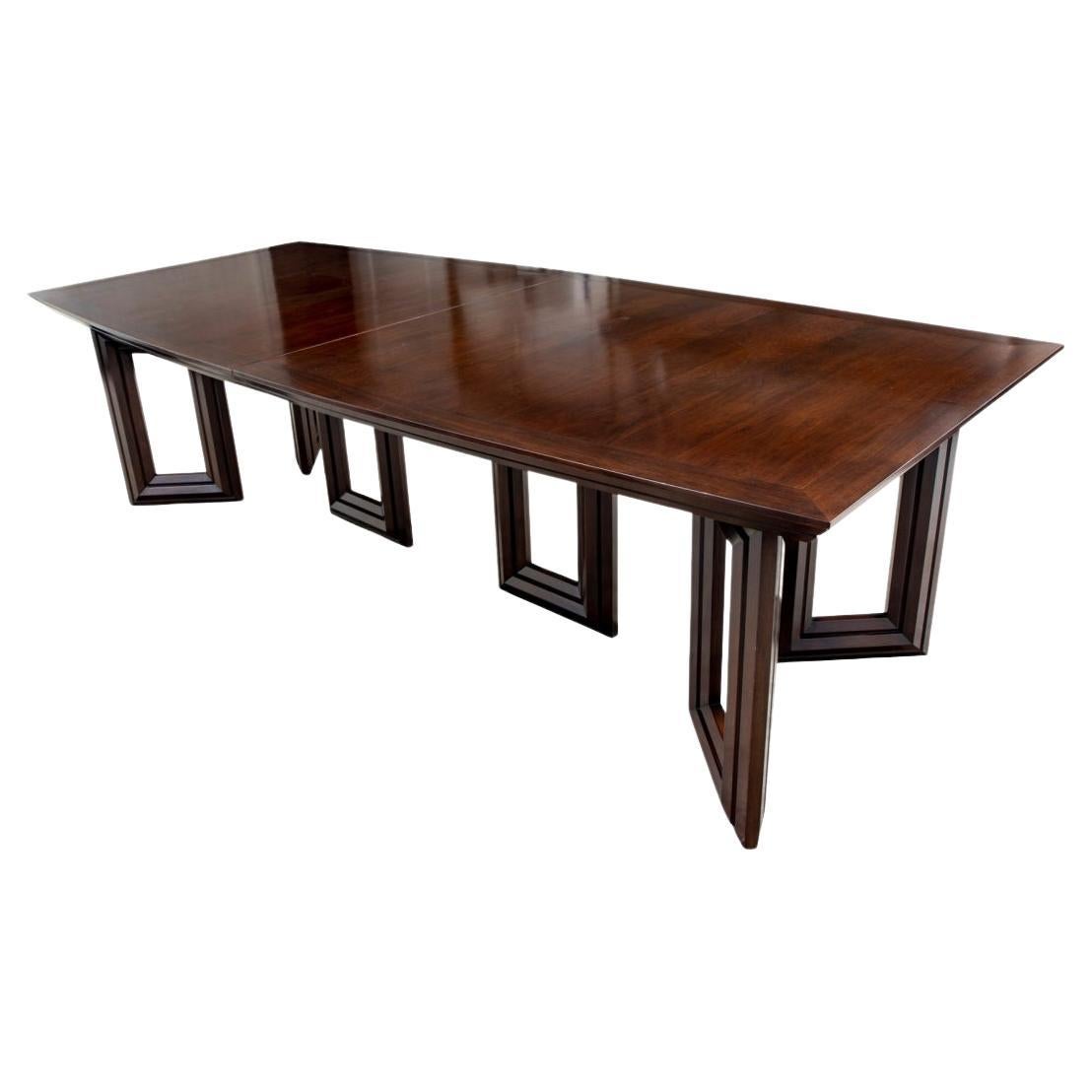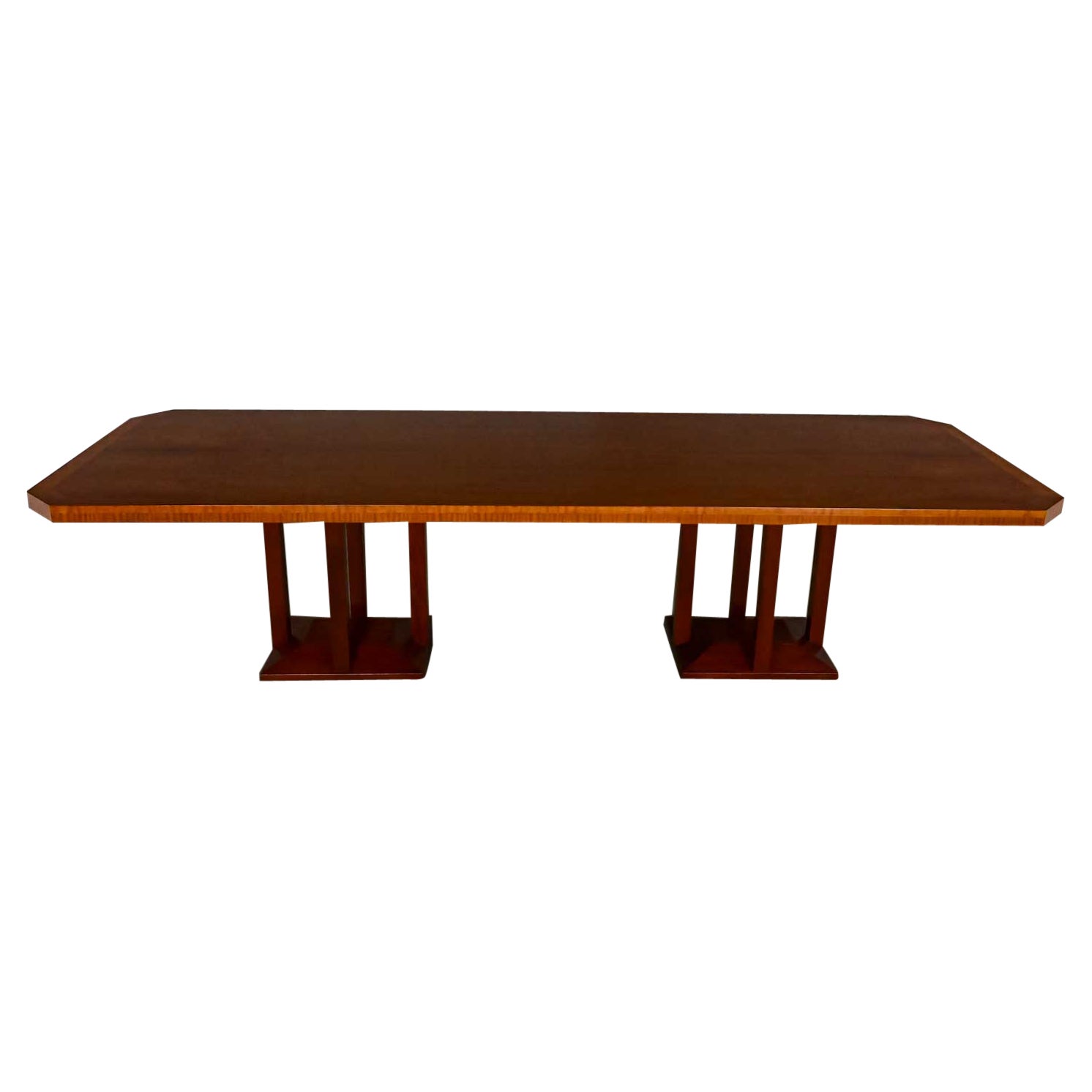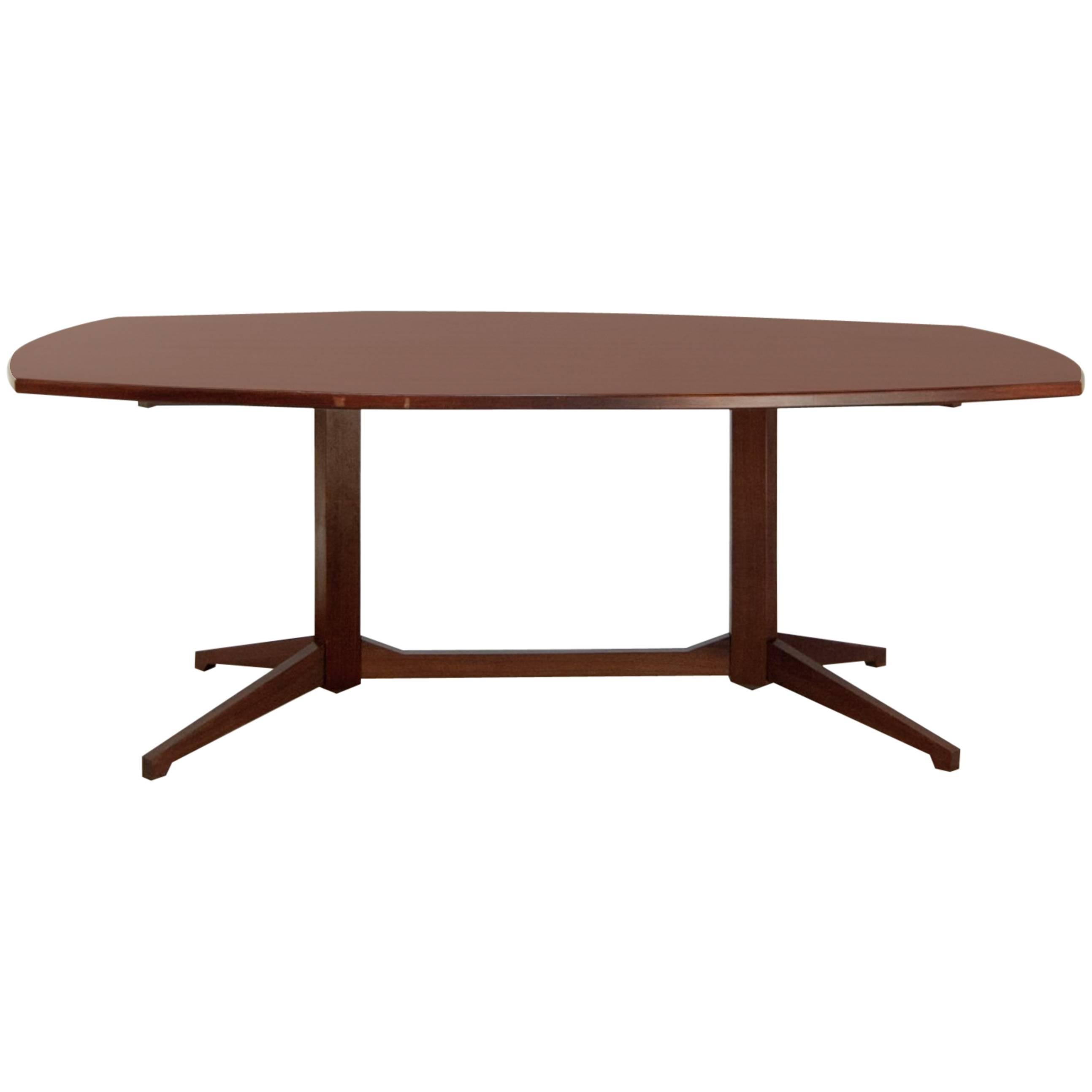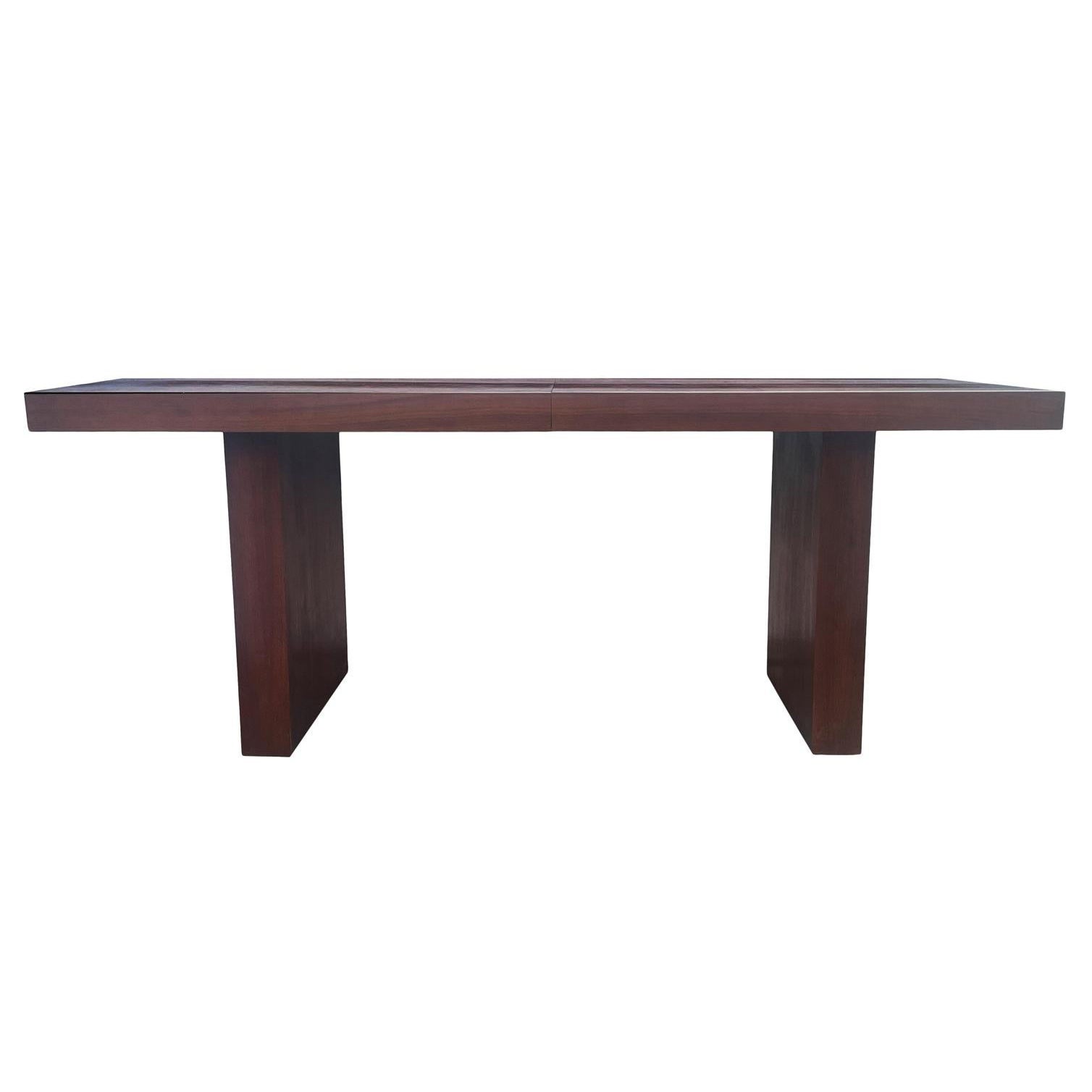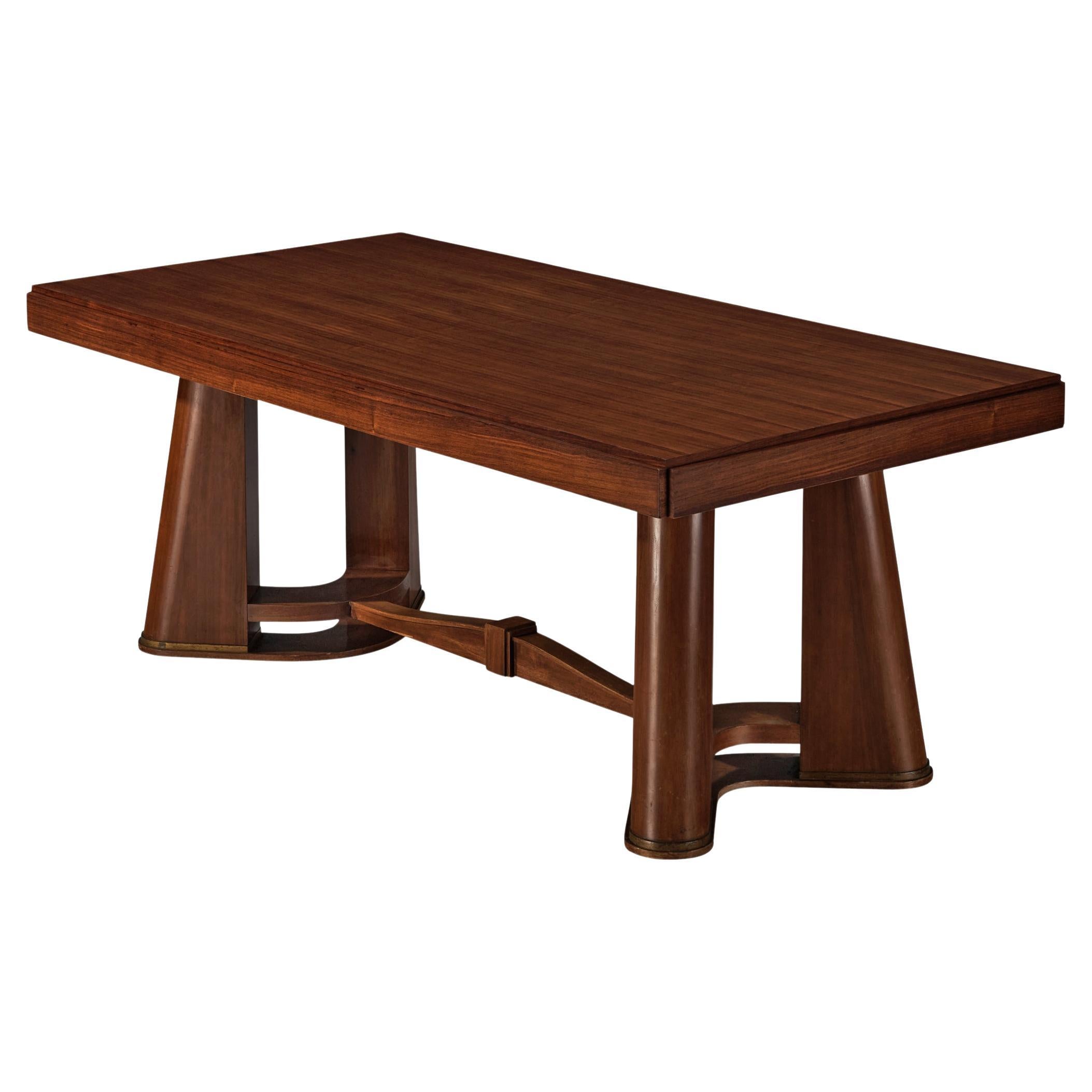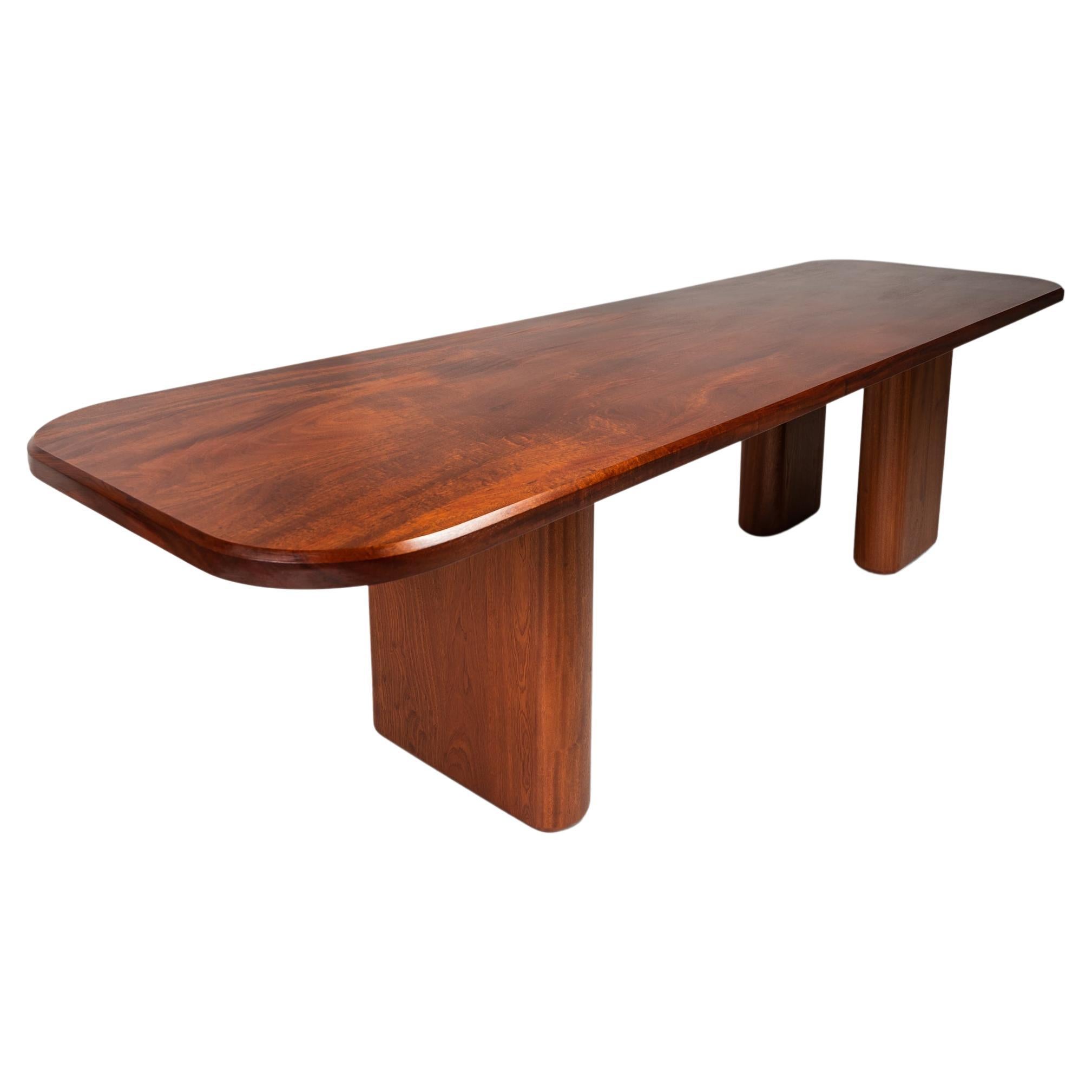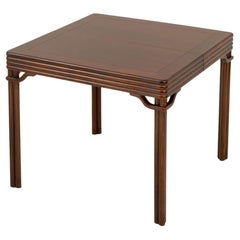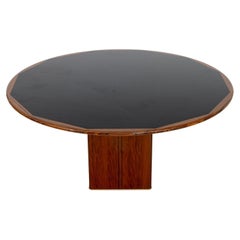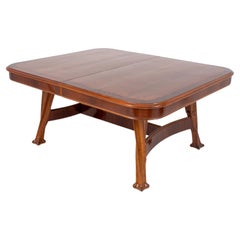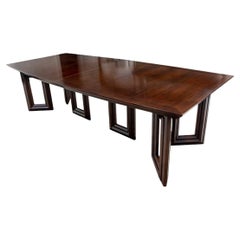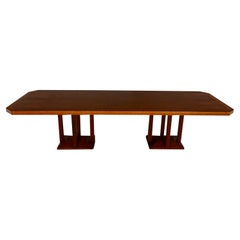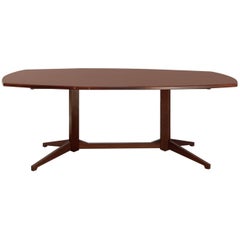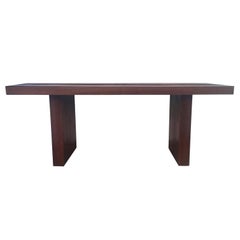Items Similar to I.M. Pei Postmodern Mahogany Dining Table
Want more images or videos?
Request additional images or videos from the seller
1 of 8
I.M. Pei Postmodern Mahogany Dining Table
$2,350
£1,773.48
€2,030.37
CA$3,314.28
A$3,638.67
CHF 1,898.30
MX$44,032.91
NOK 23,792.24
SEK 22,418.54
DKK 15,156.15
About the Item
I.M. Pei Postmodern Mahogany Dining Table, with oval top on two columnar supports. 30" H x 75" W x 33.5" D. Provenance: From the collection of the curator and owner of Berry-Hill Galleries.
- Creator:I.M. Pei (Designer)
- Dimensions:Height: 30 in (76.2 cm)Width: 75 in (190.5 cm)Depth: 33.5 in (85.09 cm)
- Style:Post-Modern (Of the Period)
- Materials and Techniques:
- Period:
- Date of Manufacture:Late 20th Century
- Condition:Wear consistent with age and use. Overall good condition, shows only light cosmetic wear, normal and commensurate with age and use.
- Seller Location:Astoria, NY
- Reference Number:Seller: 1166861stDibs: LU889344892092
About the Seller
4.9
Gold Seller
Premium sellers maintaining a 4.3+ rating and 24-hour response times
1stDibs seller since 2010
2,595 sales on 1stDibs
Typical response time: 11 hours
- ShippingRetrieving quote...Shipping from: Astoria, NY
- Return Policy
Authenticity Guarantee
In the unlikely event there’s an issue with an item’s authenticity, contact us within 1 year for a full refund. DetailsMoney-Back Guarantee
If your item is not as described, is damaged in transit, or does not arrive, contact us within 7 days for a full refund. Details24-Hour Cancellation
You have a 24-hour grace period in which to reconsider your purchase, with no questions asked.Vetted Professional Sellers
Our world-class sellers must adhere to strict standards for service and quality, maintaining the integrity of our listings.Price-Match Guarantee
If you find that a seller listed the same item for a lower price elsewhere, we’ll match it.Trusted Global Delivery
Our best-in-class carrier network provides specialized shipping options worldwide, including custom delivery.More From This Seller
View AllMid-Century Modern Rosewood Dining Table
Located in Astoria, NY
Mid-Century Modern Rosewood Dining Table, with one leaf. 30" H x 63.5" W x 38" D; fully extended: 79.5" W. Provenance: From a New York City Area Collection.
Category
Mid-20th Century Mid-Century Modern Dining Room Tables
Materials
Metal
Baker Mahogany Extending Dining Table
By Baker Furniture Company
Located in Astoria, NY
Baker Mahogany Extending Dining Table, rectangular top with two butterfly leaves, molded edge on four double columnar legs, with "Baker Furniture" label to the underside. 29.25" H x ...
Category
20th Century American Modern Dining Room Tables
Materials
Mahogany
Afra & Tobia Scarpa Walnut "Africa" Dining Table
By Afra & Tobia Scarpa, B&B Italia
Located in Astoria, NY
Afra & Tobia Scarpa Walnut "Africa" Dining Table for B&B Italia, 1975, from with ebonized circular top above rectangular support with brass trim, with "Made in Italy for B&B America ...
Category
Vintage 1970s Italian Mid-Century Modern Dining Room Tables
Materials
Brass
Louis Majorelle Art Nouveau Mahogany Dining Table
By Louis Majorelle
Located in Astoria, NY
Louis Majorelle Art Nouveau Mahogany and Ash Dining Table, with two modern extension leaves, unsigned. Extended: 29" H x 98" W x 51.25" D. Provenance: Lillian Nassau, New York. Sot...
Category
Antique Late 19th Century French Art Nouveau Dining Room Tables
Materials
Ash, Mahogany
Modern Cherry Stained Round Dining Table
Located in Astoria, NY
Modern Cherry Stained Round Dining Table, on pedestal base. 29.5" H x 48" Diameter.
Category
Late 20th Century Modern Dining Room Tables
Materials
Cherry
$950 Sale Price
34% Off
Vladimir Kagan Zebrawood Extending Pedestal Table
By Vladimir Kagan
Located in Astoria, NY
Vladimir Kagan Zebrawood Extending Pedestal Dining Table, 1970s, with two leaves, the zebrawood rectangular top inset in tan leather wrapped border, the central pedestal wrapped in t...
Category
Vintage 1970s American Mid-Century Modern Dining Room Tables
Materials
Chrome
You May Also Like
Elegant Mahogany Dining Room Table From John Rosselli
By John Rosselli
Located in Bridgeport, CT
An elegant dining table that presents in a stylish and fresh manner. . The cross-banded table with a slight concave form rests upon molded picture frame...
Category
21st Century and Contemporary Mid-Century Modern Dining Room Tables
Materials
Mahogany
Late 20th C Modern Large Custom Mahogany Dbl Pedestal Dining or Conference Table
Located in Topeka, KS
Handsome vintage Art Deco Revival large custom mahogany double pedestal dining or conference table made by Rialto & designed by Zlata Pericic for Meca Design & Production. Beautiful ...
Category
Late 20th Century American Art Deco Dining Room Tables
Materials
Mahogany
Franco Albini Mahogany mid-centry Italian Table Model TL-22 produced by Poggi
By Franco Albini
Located in Barcelona, ES
Franco Albini & Franca Helg.
Dining table model no. TL22.
Manufactured by Poggi,
Italy, 1958.
Mahogany.
Measurements:
180.3 cm x 104.1 cm x 73 H cm.
70.98 in x 40.98 in x 28.74 in.
Literature:
Giuliana Gramigna, Repertorio 1950/1980, Milan, 1985, p. 123.
Franco Albini, was born in 1905 and died in 1977. He spent his childhood and part of his youth in Robbiate in Brianza, where he was born. Albini, as an adolescent moved with his family to Milan. Here he enrolled in the Faculty of Architecture of the Polytechnic and graduated in 1929. He started his professional activity in the studio of Gio Ponti and Emilio Lancia, with whom he collaborated for three years. At the 1929 International Exhibition in Barcelona (where Gio Ponti curated the Italian pavilion and Mies van der Rohe realized that of Germany) and in Paris where, as Franca Helg recounted, he had the opportunity to visit the studio by Le Corbusier.
In those three years, the works he carried out are admittedly of the twentieth century imprint. It is the meeting with Edoardo Persico that marked a clear turning point towards rationalism and the approach to the group of editors of "Casabella". The partly ironic and partly very harsh comments of the Neapolitan critic to a series of drawings, made by Albini for the design of some office furniture, caused him a great disturbance. “I spent days of real anguish - Albini recalls - I had to answer all the questions. I also had a fever, a large and long fever. "
The meted provoked Albini to openen a professional studio in via Panizza with Renato Camus and Giancarlo Palanti. The group of architects began to deal with public housing by participating in the competition for the Baracca district in San Siro in 1932 and then building the IFACP neighborhoods: Fabio Filzi (1936/38), Gabriele D'Annunzio and Ettore Ponti (1939).
During this period, Albini also worked on his first villa (Pestarini), which Giuseppe Pagano, architect and critic of the time, presented as follows: “This coherence, which the superficial rhetoric of fashionable jugglers calls intransigence, and which is instead the basis of understood between the fantasy of art and the reality of the craft, in Franco Albini, it is so rooted that it transforms theory into a moral attitude ".
But it is above all in the context of the exhibitions that the Milanese master experienced his compromise between that "rigor and poetic fantasy" of which Pagano speaks, coining the elements that became a recurring theme in his . The opening in 1933 of the new Triennale headquarters in Milan, in the Palazzo dell'Arte, was an important opportunity to express the strong innovative character of rationalist thinking, a gym in which to freely experiment with new materials and new solutions, but above all a "method". "Cultivated as a communication laboratory, the art of setting up was for the rationalists of the first generation what the perspective had been for the architects of humanism: the field open to a hypothesis of space that needed profound reflections before landing the concreteness of the construction site ".
Together with Giancarlo Palanti, Albini on the occasion of the V Triennale di Milano set up the steel structure house (with R. Camus, G. Mazzoleni, G. Minoletti and with the coordination of G. Pagano), for which he also designed the 'furniture. At the following Triennale of 1936, Persico dided, together with a group of young designers gathered by Pagano in the previous edition of 1933, Franco Albini took care of the preparations of the home exhibition. The setting up of Stanza per un uomo, at that same Triennale, allows us to understand the acute and ironic approach of Albini, as a man and as a designer: "Celebrating the beauty of mechanics was the imperative to which, for example, the surprising displays by Franco Albini who managed, in the subtle way of a refined and rarefied style, to sublimate their practical content in the metaphysics of daring still lifes: flying objects which marked in the void refined frames and metal intricacies the nodes of a fantastic cartography where industry finally became art free from purpose ".
That same year Albini and Romano designed the exhibition of the Ancient Italian Goldsmithery: vertical uprights, simple linear rods, designed the space. A theme, of the "flagpole", seemed to be the center of the evolution of production and the creative process. The concept is reworked over time, with the technique of decomposition and recomposition typical of Albinian design: in the preparation of the Scipione Exhibition and contemporary drawings (1941) the tapered flagpoles, on which the paintings and display cases were hung, are supported by a grid of steel cables; in the Vanzetti stand (1942) they take the V-shape; in the Olivetti shop in Paris (1956) the polished mahogany uprights support the shelves for the display of typewriters and calculators.
The flagpole is found, however, also in other areas. In the apartments he designed, it is used as a pivot on which the paintings can be suspended and rotated to allow different points of view, but at the same time as an element capable of dividing the spaces. The Veliero bookcase...
Category
Mid-20th Century Italian Mid-Century Modern Dining Room Tables
Materials
Mahogany
Mid Century Modern Dining Room Table in Walnut by Arthur Umanoff
By Arthur Umanoff, Dillingham Manufacturing Company
Located in Philadelphia, PA
A clean line dining table by Arthur Umanoff circa 1960's. It features beautiful walnut wood construction. It comes with one 18 inch leaves not...
Category
Vintage 1960s American Mid-Century Modern Dining Room Tables
Materials
Walnut
French Art Deco Dining Table with Elegant Base in Wood 1940s
Located in Waalwijk, NL
Dining table, wood, France, 1940s
This Art Deco dining table is a striking example of timeless elegance and refined craftsmanship. Made from rich wood wood, its design effortlessly ...
Category
Vintage 1940s French Art Deco Tables
Materials
Wenge
Organic Modern Conference Dining Table in Madagascar Mahogany by Mark Leblanc
Located in Deland, FL
Breathtaking both in scope and material this exquisite conference table is truly a work of functional art. Constructed from a single solid slab of Madagascar Mahogany, a rare wood sp...
Category
2010s American Organic Modern Dining Room Tables
Materials
Mahogany
More Ways To Browse
36 Round Wood Table
6 Foot Round Table
70s Extendable Dining Table
8 Leg Octagonal
Ansager Draw Leaf
Antique 5 Leg Table
Antique 6 Leg Dining Table
Antique Buck Saw
Antique Oak Pedestal Table With 2 Leaves
Arne Vodder 204
Arthur Romney Green
At310 Hans Wegner
Baluster Trestle Table
Banquet Sheraton Tables
Barker Bros Tables
Bausman Table
Bernard Rhone
Boat Shaped Table Risom
